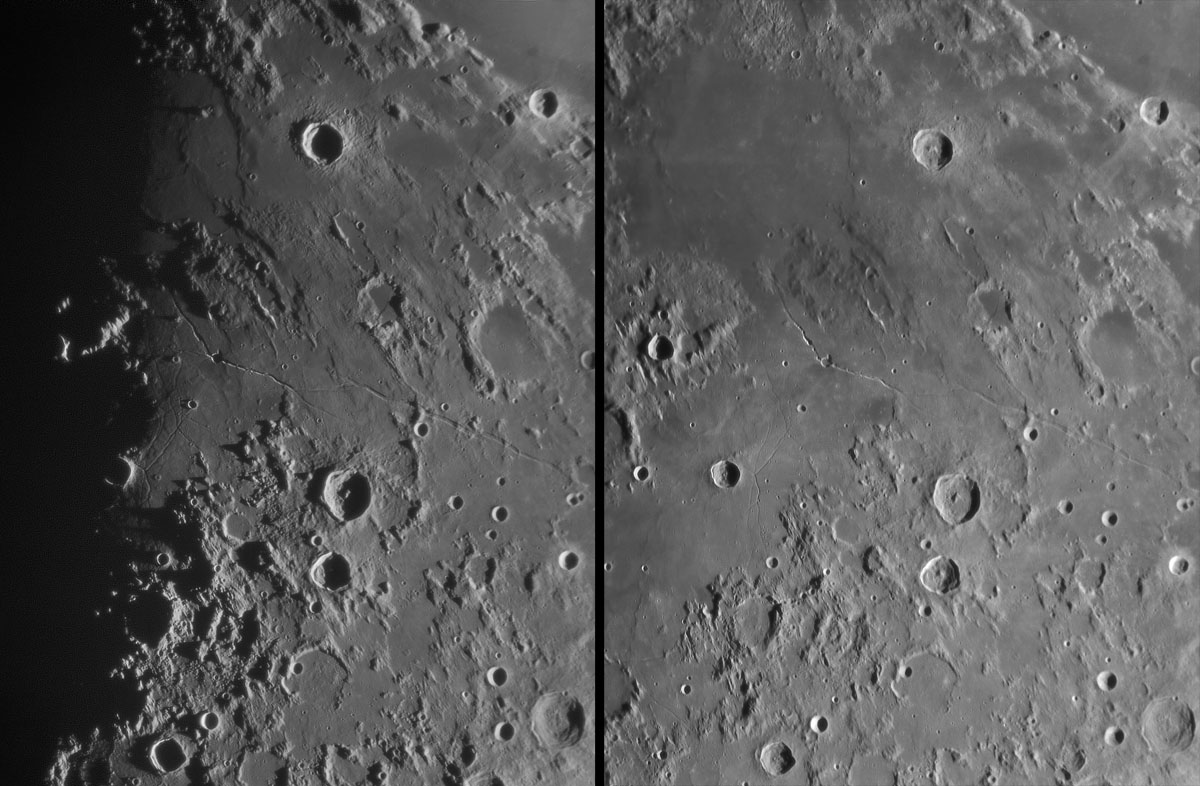July 19, 2022
As Time Marches On
Originally published August 27, 2012

image by Gary Beal, New Zealand
These fine images of the Triesnecker and Hyginus Rilles were sent to me by astrophotographer Gary Beal who normally does deep sky and solar work, but is trying his hand at lunar imaging also. Gary was impressed with the view visually also after he had completed imaging. Chuck was also observing the night of the 24th (left image), as was I. Chuck reported "I could just glimpse the Triesnecker rilles with the 4" but not with the 6". Visually observing once again amazes me with how little can be seen by comparison with imaging. I was also impressed with how much the classic observers of the 1800s could detect with their telescopes that were typically in the 3 to 6" range." I could not pick them out at all with my 3.5" ETX. Gary also imaged the same region the following night under similar conditions and it really shows the difference a day makes bringing the region fully into the sunlight. Reading from what Thomas Gwyn Elger wrote in 1895: (IAU Directions) -- "Triesnecker: Apart from being the centre of one of the most remarkable rille-systems on the moon, this ring-plain, though only about 14 miles in diameter, is an object especially worthy of examination under every phase. At sunrise, and for some time afterwards, owing to the superior altitude of the N.E. section of the wall, a considerable portion of the border on the N. and N.W. is masked by its shadow, which thus appears to destroy its continuity". On Hyginius Elger wrote: "A deep depression, rather less than 4 miles across, with a low rim of varying altitude, having a crater on its N. edge. This formation is remarkable for the great cleft which traverses it, discovered by Schroter in 1788. The coarser parts of this object are easily visible in small telescopes, and may be glimpsed under suitable conditions with a 2 inch achromatic."
Images show so much more detail, I really appreciate how the great observers of the past were very skilled at seeing such fine detail on the Moon and how far we have come as amateurs in imaging it today.
Maurice Collins
Technical Details
Left: 24 Aug 2012 at 0805UT Right: 25 Aug 2012 at 0850UT
10" f5 newt, and a Televue 2.5x PowerMate, used a DMK41, and about 100 of the 2000 frames shot.
Related Links
Gary's website: http://www.totalwebsolutionz.co.nz/zeissnut/index.html
Rükl plate 34
Yesterday's LPOD: A Small Step for a Man, but Mankind Failed To Follow
Tomorrow's LPOD: Three Old Guys
COMMENTS?
Register, Log in, and join in the comments.



